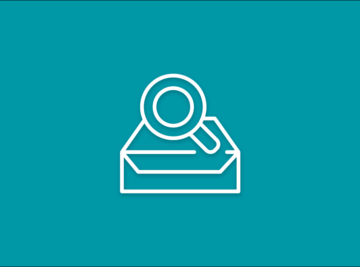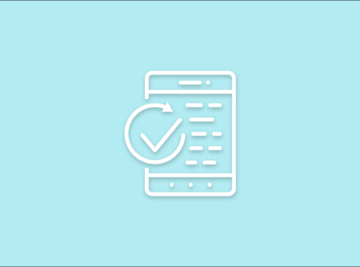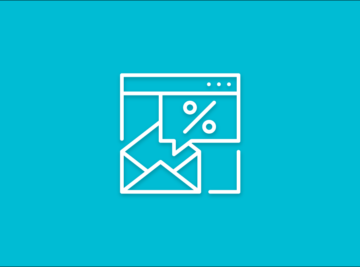Successfully implementing an inbound marketing strategy for your tourism or recreation business is no small feat: It takes work, focus, and commitment to the inbound methodology. A central tenet of the inbound methodology is remembering that your customers don’t want you to sell your services to the; they want you to educate them so that they can make their own decisions.
To educate your potential future customers, you’ll want to pay attention to some of the best practices that inform the inbound methodology. These are:
- Using customer personas
- Understanding the customers’ journey
- Creating valuable content
- Knowing how to leverage that content
Using Personas to Depict Your Ideal Guests and Patrons
Personas are semi-fictional representations of your ideal customer, based on real data and some educated guesses about demographics, behaviors, motivations, and goals. This representation is then used to inform your inbound strategy: It helps you to understand who you are trying to attract, and therefore the kind of content that you need to create to attract them.
Free Guide: Inbound Marketing for Tourism
Everything You Need to Know to Increase Traffic, Capture Leads, and Gain More Customers and Bookings Through Your Tourism Destination’s Website
These personas should be based on research and analysis. A huge part of creating your personas will be looking at the people who are already doing business with you. By conducting research and analyzing your results, you’ll be able to identify trends in your customer base that will allow you to create these personas. The easiest way to do this research is to ask your current customer questions.
For example, the owner of a bed and breakfast might ask their current customers things like:
- Are you from in state or out of state?
- Do you travel with your children, significant other, or alone?
- What do you look for in accommodations when booking a room?
- What kinds of activities do you like to do when traveling?
- Etc.
By asking these questions, the owner might then realize then realize that they have two main personas: An In-state Persona and an Out-of-State Persona, each with their own interests and criteria for selecting a place to stay. Or maybe they realize that their customers are almost always from in-state, but that they come in two main varieties: Single vacationers who want to relax vs. Families who need activities to keep their kids busy.
Had the owner not identified these trends, she would not have known the kind of content that she should be creating to attract new business to her website.
Understanding Your Customers’ Research Process
The process that customers or guests go through as they research their way towards making a final decision, booking or purchase is often referred to as the buyer’s journey. By knowing what the buyer’s journey looks like for your targeted personas, you can tailor your interactions so that you are always creating value for your potential customer and nurturing them along the path to making a decision.
The buyer’s journey is made of three stages: The Awareness Stage, the Consideration Stage, and the Decision Stage.
The Awareness Stage is when a buyer is experiencing some kind of problem or opportunity. In this stage, they are doing research to better understand what they are experiencing. For example, someone who has been feeling burnt out at work might begin researching stress relief. Through this research, they might decide that they need to take a vacation to recharge. This moves them into the Consideration Stage.
In the Consideration Stage, the buyer knows their problem and is considering the different options at their disposal. For example, at this stage the burnt out worker is trying to decide between the type of vacation that they want; say, deciding between a bed and breakfast vs. a spa weekend. Once they have settled on the type of vacation they want, they have moved into the Decision Stage.
In the Decision Stage, a buyer knows what they want and are actively searching for a vendor who can fulfill their needs/wants. For example, at this stage the burnt out worker has decided that they want to stay at a bed and breakfast and is actively searching for locations and comparing rates, amenities, etc.
By building a buyer’s journey for each of your personas, you can preempt the kinds of questions, topics, and search terms that your buyer might use in their research. By knowing this, you can tailor your content creation so that you are only attracting potential buyers to your website who are a good fit.
Creating Valuable Content
Once you have your personas set, and your buyer’s journey for each persona mapped out, you can use that information to create valuable content that your ideal customers want. This content can take the form of blog posts, webinars, toolkits, infographics, and more. (New to the content marketing game? Check out these free or cheap tools content marketers can use to increase their effectiveness and reach!)
Because you are tailoring the content around what your ideal buyer wants, you are likely to attract them naturally through organic search, which brings them to your site and begins to fill your funnel.
For example, the owner of a bed and breakfast might write a blog post about “10 Ways a Weekend at a Bed and Breakfast Will Help You Destress from Work,” which directly appeals to one of its personas.
Leveraging Your Content
But of course, the journey doesn’t end at just creating the content. You also need to leverage that content—you need to use it in a way that will help you close sales.
The first step to leveraging your content is to distribute it. Yes, you want your customers to be finding your tourism/recreation website through organic search, but that doesn’t happen overnight. While you are working and waiting for the inbound engine to really take off, you should distribute your content on your own. Social media, newsletters, and more will help you spread the word about your site as you build your organic audience.
The second step is to make sure that the content is working for you. To do this, the content has to be generating value for your business, and the most likely scenario for that would be that it is helping you capture contact information for prospective customers. By strategically using landing pages, calls-to-action (CTAs), content offers, and more, you can coax your website visitors into supplying you with their contact info, which ultimately allows you to enter them into a lead-nurturing sequence. Once they’re in that sequence, you can hopefully help guide them along to completing a sale.
For example, if a prospective visitor did a search and clicked on the blog post mentioned above, they might see a call-to-action to download a content offer for an ebook called “The Complete Vacationer’s Guide to Staying at a B&B.” When they click on this call-to-action, they would be taken to a landing page that touts the benefits of the ebook. Then, to download the ebook, they would need to supply their contact information, which would allow the bed and breakfast owner to start emailing them.
Every Visit is a Journey
As you might have noticed, inbound marketing is largely about collecting data and then leveraging it to create content that appeals to the customers that you are trying to attract. By following the fundamental best practices of inbound marketing, your tourism or recreation business can successfully perform in SEO and outperform your competition, growing your business.










